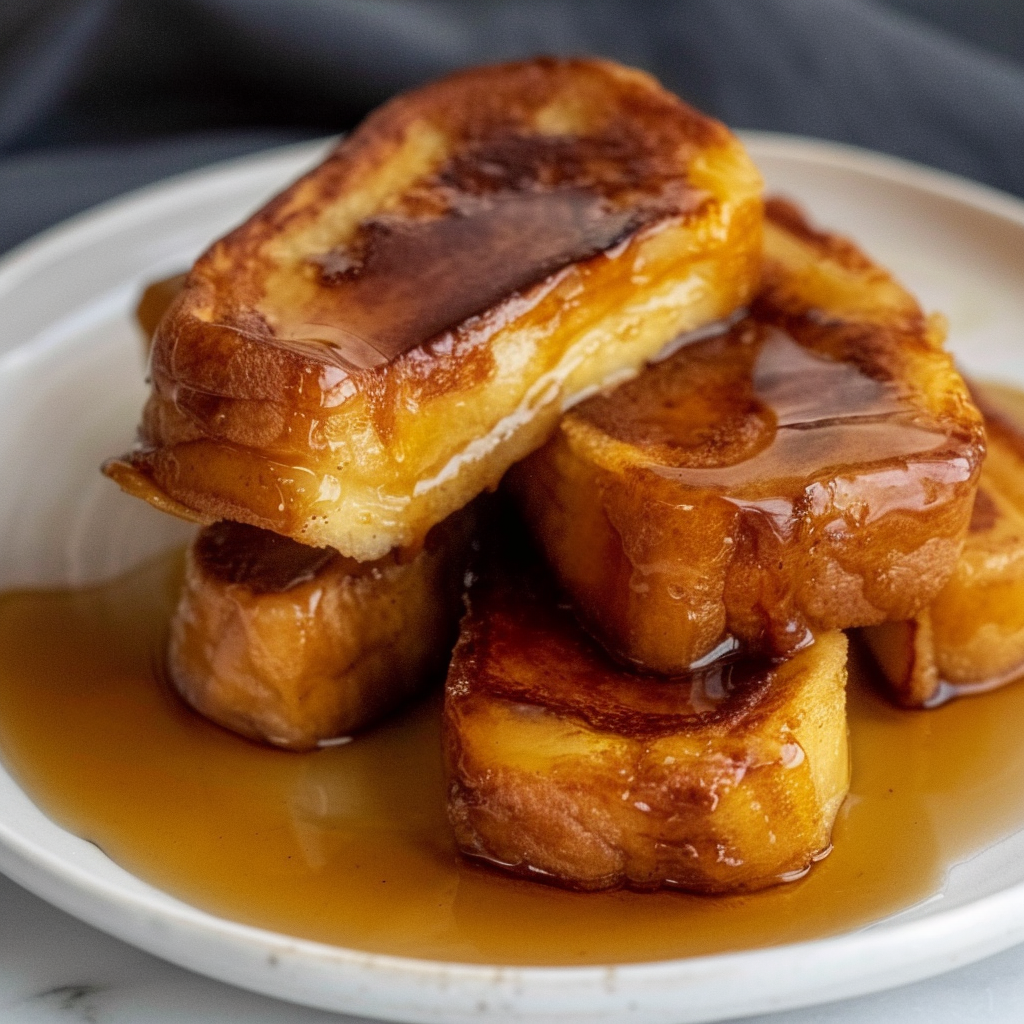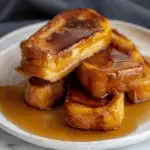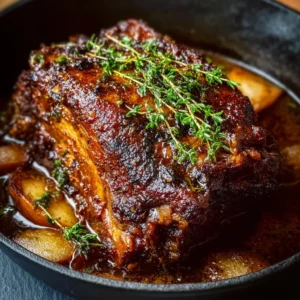Classic Breakfast Staple
French toast has long been a staple in kitchens across the world, offering a comforting mix of soft bread and sweet custard, often served with syrup and fruit. But as dietary needs evolve, many are seeking healthier breakfast options that provide real fuel for the day. Enter protein French toast sticks—a modern, macro-friendly take on the classic.
These healthy French toast sticks deliver all the cinnamon-scented nostalgia of the original while boosting your morning with added protein, making them ideal for busy mornings, post-workout snacks, or meal prep. What makes this version special is its simplicity and flexibility. With just a few pantry staples and optional protein-rich ingredients, you can create a balanced breakfast that satisfies both your taste buds and your nutritional goals.
If you’ve ever wondered how to make French toast that’s both crispy on the outside and soft in the middle, but without excess sugar or fat, this recipe has you covered. By using ingredients like Greek yogurt or high-protein milk, and choosing the right bread—like brioche or Texas toast—you’ll achieve that perfect golden crust with a custardy interior. And for those curious about the history behind this dish, French toast has roots going back to ancient Rome, proving its timeless appeal.
With the rise of high-protein breakfasts and meal-preppable recipes, protein French toast sticks are gaining popularity on platforms like Pinterest, where users share their creative takes using toppings like almond butter, fresh berries, and even chocolate protein drizzle. This easy-to-make recipe strikes the perfect balance between indulgent and nutritious, making it a must-try for anyone looking to upgrade their breakfast routine.
Ready to flip your mornings into something more nourishing and satisfying? This guide breaks down every step—from ingredient choices to cooking techniques—so you can make the best healthy cinnamon French toast sticks at home.
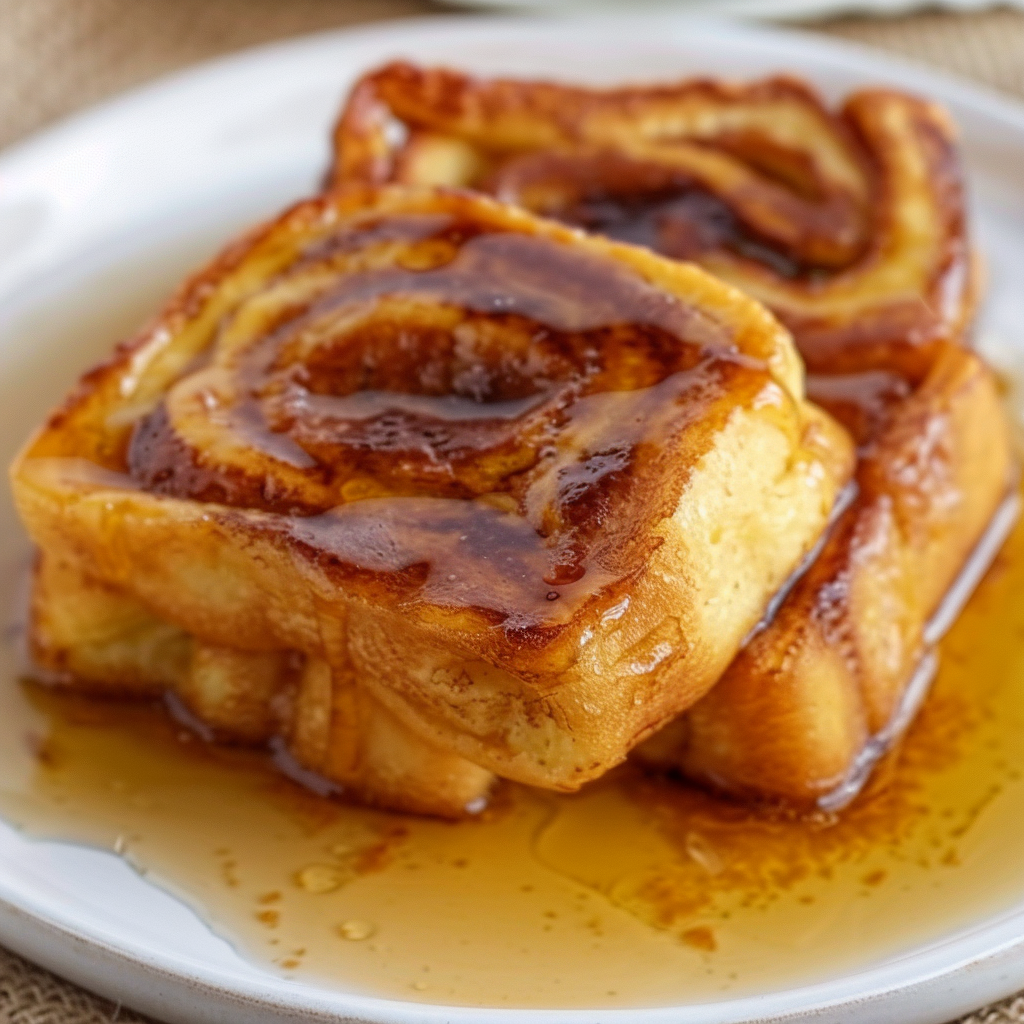
Why Protein French Toast Sticks?
Traditional French toast is delicious, but it often lacks the nutritional substance needed to fuel your morning. That’s where protein French toast sticks stand out—they combine indulgent flavor with lasting energy. By increasing the protein content, this version supports muscle repair, helps regulate blood sugar, and keeps you full longer, which is essential whether you’re heading to work, school, or a workout.
So, what makes this twist on French toast genuinely protein-packed? It starts with the custard base. Instead of only using eggs and milk, consider adding Greek yogurt, which not only enhances the texture but also significantly boosts the protein profile. For an even higher hit, many home cooks now stir in a scoop of vanilla or unflavored protein powder, creating a subtle sweetness and extra nutritional benefit without sacrificing flavor.
This dish also shines for its versatility. It’s a smart option for athletes, growing kids, and even those on weight management plans. Whether you’re planning for a make-ahead breakfast, a casual brunch, or a quick post-gym snack, these healthy French toast sticks can be adapted to suit any schedule or dietary need. Check out these meal prep-friendly ideas on Pinterest to explore various storage and reheating options.
Including more protein at breakfast has been linked to increased alertness and improved metabolism. According to Wikipedia, dietary protein is vital for building enzymes, hormones, and tissue. In a morning meal, that translates to sustained energy and reduced cravings throughout the day. Swapping your regular toast or cereal for these upgraded sticks can support better nutritional habits long-term.
It’s not just about the numbers, though. When done right, these crispy French toast sticks offer a warming, cinnamon-laced bite that satisfies those morning cravings without the sugar crash. By carefully selecting your ingredients and cooking method, you’ll enjoy a perfectly balanced, crave-worthy breakfast that fits into virtually any lifestyle.
Key Ingredients Breakdown
Crafting the perfect protein French toast sticks starts with using the right ingredients. Every component plays a crucial role in taste, texture, and nutritional value. Whether you’re sticking to the classic version or experimenting with your own twist, these foundational elements set the stage for a satisfying and healthy French toast.
Bread Choices
Choosing the right bread is essential. Look for options that are thick-cut and sturdy, as they hold up best when dipped in the custard.
-
Brioche and Texas toast are popular for their soft texture and ability to absorb the egg mixture without falling apart.
-
For a healthier alternative, try whole grain or sprouted grain bread, which adds fiber and keeps you full longer.
-
Want more protein? Opt for high-protein or low-carb bread varieties that are now widely available in grocery stores.
-
Gluten-free? Use your favorite gluten-free loaf—but ensure it’s thick enough to slice into sticks that won’t crumble during cooking.
Protein-Packed Custard Mix
The custard mixture is where you can add serious nutritional value. Traditional French toast uses eggs and milk, but this upgraded version includes additional protein-rich ingredients to support energy and recovery.
-
Eggs provide structure, moisture, and essential nutrients like choline and vitamin D.
-
Milk or protein-fortified milk boosts both creaminess and protein. Choose options like fairlife or other ultra-filtered dairy brands.
-
Greek yogurt is a great swap for part of the milk—it’s rich in casein protein and adds a tangy balance to the sweetness. Learn more about yogurt here.
-
For an extra boost, mix in a half scoop of vanilla or cinnamon protein powder. This addition enhances the flavor and macro balance, ideal for post-workout refueling.
Flavoring is just as important. A well-seasoned custard ensures every bite is packed with delicious warm spice and sweetness.
-
Cinnamon is a must—its natural sweetness allows you to use less sugar. Discover its health benefits including antioxidant and anti-inflammatory properties.
-
A splash of vanilla extract deepens the aroma and adds richness.
-
Add a pinch of salt to enhance overall flavor and balance the sweetness.
Optional Sweeteners & Add-ins
Depending on your health goals, you can adjust the sweetness and texture of your French toast.
-
Natural sweeteners like pure maple syrup, honey, or mashed banana can be mixed into the custard for added flavor without refined sugar.
-
Boost fiber and healthy fats with chia seeds, ground flaxseed, or a spoonful of nut butter stirred into the mix.
-
For extra texture and nutrition, sprinkle in oats or crushed nuts before dipping the bread.
This combination of ingredients not only creates a delicious base for your cinnamon French toast, but it also turns a typically indulgent dish into one that fits a balanced lifestyle. For visual inspiration on customizing your version, scroll through the many creative spins on French toast variations.
Step-by-Step Instructions: Making Healthy French Toast Sticks
Once you’ve gathered your protein-rich ingredients, it’s time to bring your healthy French toast sticks to life. This easy recipe is perfect for beginners and home cooks alike—no special tools or advanced techniques required. The key is in the process: how you cut, dip, and cook makes all the difference in achieving the ideal crispy outside and soft, custardy center.
1. Prep the Bread
-
Use 4 slices of thick-cut bread such as brioche or Texas toast.
-
Slice each piece into 3 or 4 equal sticks.
-
Let the bread sit out for 10–15 minutes to slightly dry—it will absorb the custard better without becoming soggy.
2. Make the Protein Custard
In a shallow bowl, whisk together the following:
-
2 large eggs
-
1/3 cup milk (or use protein milk for a boost)
-
1/4 cup Greek yogurt (optional, but highly recommended)
-
1 teaspoon vanilla extract
-
1/2 teaspoon ground cinnamon
-
Pinch of salt
For extra protein, add:
-
1/2 scoop vanilla or unflavored protein powder
Whisk until smooth. If the mixture feels too thick from the yogurt or protein powder, add a splash more milk.
3. Dip the Bread Sticks
-
Quickly dip each stick into the custard, coating all sides.
-
Don’t soak the bread—just a fast dip to avoid a mushy center.
-
Let any excess custard drip off before placing it on a plate or tray.
4. Cook the French Toast Sticks
Choose your preferred method:
Pan-Fry:
-
Heat a nonstick skillet over medium heat.
-
Add a little butter or coconut oil.
-
Cook each stick for 1–2 minutes per side until all edges are golden brown and crispy.
Bake:
-
Preheat oven to 375°F (190°C).
-
Place sticks on a parchment-lined baking sheet.
-
Bake for 12–15 minutes, flipping halfway through.
Air Fry:
-
Preheat air fryer to 375°F.
-
Place sticks in a single layer in the basket.
-
Cook for 6–8 minutes, flipping once.
Cooking in an air fryer gives the crispiest texture with the least oil—perfect for a lighter breakfast.
5. Serve Warm
-
Plate with fresh fruit, a drizzle of natural maple syrup, or a side of Greek yogurt for dipping.
-
For low-sugar or diabetic-friendly options, try sugar-free syrup or a dusting of cinnamon and monk fruit sweetener.
Need ideas for plating and presentation? Browse healthy breakfast recipes for ways to elevate your serving style.
This method ensures your protein French toast sticks come out crisp, warm, and full of flavor—ready for meal prep, brunch, or a grab-and-go snack.
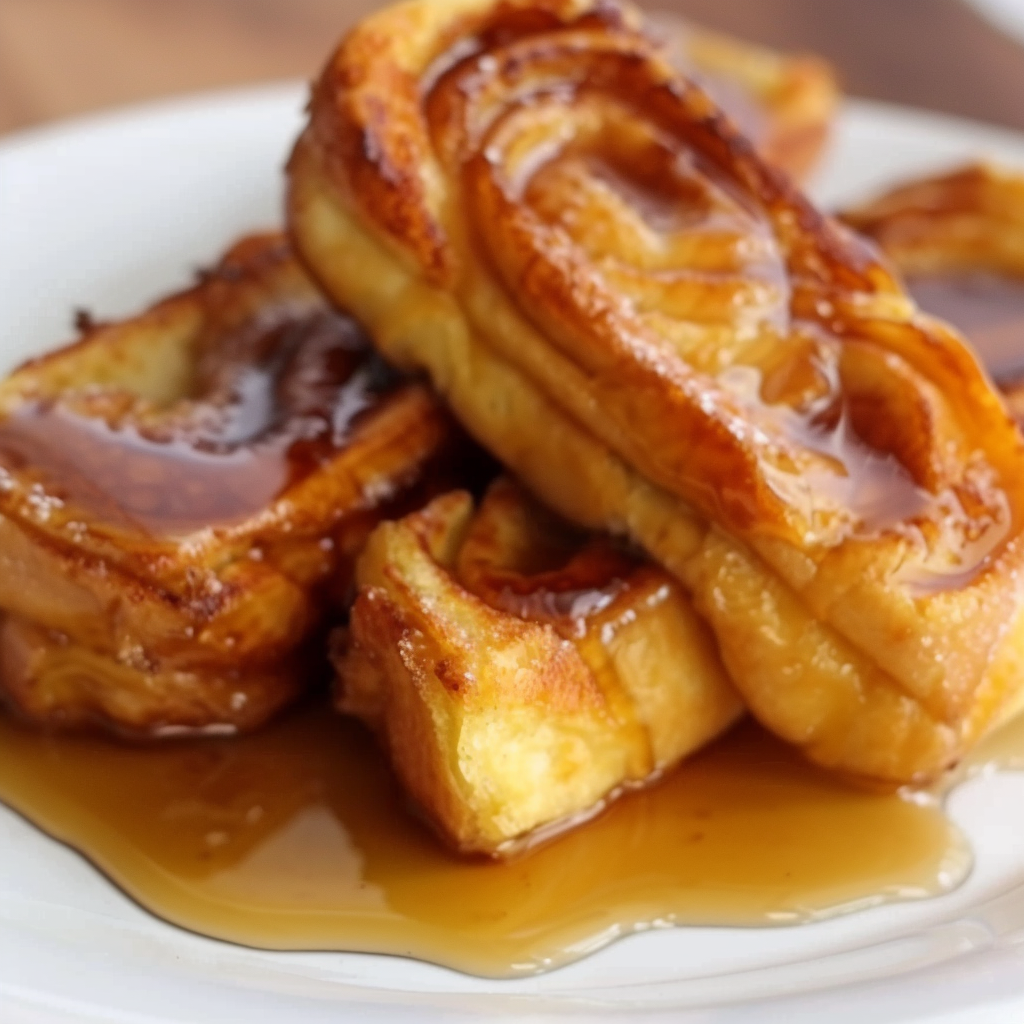
Baking vs. Pan Frying vs. Air Frying
When making protein French toast sticks, your choice of cooking method can significantly impact texture, flavor, and nutritional value. Each approach offers unique benefits, and the best option depends on your personal preferences and time constraints.
Pan Frying
Pan frying is the classic method and yields rich, crispy French toast sticks with a golden-brown crust.
-
Pros:
-
Creates the most traditional taste and texture.
-
Ideal for small batches.
-
-
Cons:
-
Requires oil or butter.
-
Slightly higher in fat and calories.
-
Can be time-consuming for large quantities.
-
Pan frying is a great choice if you’re aiming for crispy edges and don’t mind the added fat from cooking oils. Using healthier options like coconut oil or avocado oil can improve the nutritional profile.
Baking
Baking is the hands-off, batch-friendly method perfect for meal prepping or feeding a crowd.
-
Pros:
-
Lower in fat; no need for added oil.
-
Bakes evenly in large batches.
-
-
Cons:
-
Slightly softer texture compared to pan frying.
-
May require a flip halfway through for even browning.
-
This method is ideal if you’re preparing ahead for the week. For reheating, baked sticks maintain their texture well when toasted or air-fried the next day. Explore more meal prep ideas to pair these sticks with other breakfast components.
Air Frying
Air frying offers a quick, low-fat method with a crisp finish that rivals frying without the mess or extra calories.
-
Pros:
-
Crispy exterior with minimal oil.
-
Fast cooking time (6–8 minutes).
-
Energy-efficient.
-
-
Cons:
-
Requires an air fryer.
-
Smaller batch sizes.
-
Air frying is perfect for weekday mornings when you’re short on time but still want a crispy, satisfying breakfast. Learn more about this cooking tool in this air fryer overview.
Each method has its advantages. For the crispiest finish, go with the air fryer. For a more traditional texture, choose pan frying. If you’re focused on health and convenience, baking may be your best bet.
Nutrition Breakdown & Macros (Estimated)
Understanding the nutritional content of your protein French toast sticks can help you better align your meals with your health goals. This version of French toast is designed to offer a balance of protein, healthy fats, and complex carbohydrates, making it a smart choice for breakfast or post-workout fuel.
Here’s an estimated breakdown per serving (based on a recipe using 4 slices of brioche bread, 2 eggs, and 1/3 cup milk):
-
Calories: 280–320
-
Protein: 18–22g
-
Carbohydrates: 28–35g
-
Fat: 10–13g
-
Fiber: 3–5g
-
Sugar: 4–7g (depends on toppings and milk choice)
Adding Greek yogurt, protein milk, or protein powder can raise the protein content significantly. You can easily tweak the macros depending on your dietary needs:
-
Use low-carb or high-protein bread to lower the carb count.
-
Add chia seeds or flaxseeds for more fiber and omega-3s.
-
Swap syrup for fresh fruit or a low-calorie dip to reduce sugar.
When comparing this to store-bought or fast-food French toast sticks, homemade versions offer more nutritional control with less added sugar and preservatives. For more insights on why protein at breakfast is so important, see the Wikipedia page on dietary protein.
If you’re using these as part of a post-workout snack, pairing them with a side of Greek yogurt or a protein shake can enhance muscle recovery and keep you feeling full longer.
Customizing Your Protein French Toast Sticks
One of the best parts about making healthy French toast at home is how customizable it is. Whether you’re looking to change up the flavor, make it fit specific diets, or add extra nutrients, the possibilities are endless.
Flavor Variations
-
Chocolate Protein: Add a scoop of chocolate protein powder and top with cocoa nibs or dark chocolate chips.
-
Pumpkin Spice: Mix in pumpkin purée and pumpkin spice blend with the custard for a fall-inspired twist.
-
Peanut Butter Banana: Swirl in a spoonful of peanut butter and add thin banana slices on top after cooking.
These creative spins not only change the flavor profile but also add additional vitamins and minerals, especially if you’re using ingredients like bananas, nuts, or pumpkin.
Savory French Toast Sticks
Who says French toast has to be sweet?
-
Omit vanilla and cinnamon.
-
Add chopped herbs, black pepper, and shredded cheese to the egg mixture.
-
Serve with marinara or avocado mash instead of syrup.
This variation is great for lunchboxes or even easy kid lunches—explore more ideas on Pinterest for family-friendly spins.
Savory versions are also lower in sugar and make a balanced snack or quick meal when topped with an egg or some avocado.
Toppings & Dips: Healthy Pairings
The right toppings and dips elevate your protein French toast sticks from simple to sensational. Keeping it healthy doesn’t mean sacrificing flavor.
-
Fresh Fruit: Berries, apple slices, or banana add natural sweetness and fiber.
-
Yogurt Dip: Mix plain Greek yogurt with a dash of cinnamon and vanilla extract for a creamy, high-protein dip.
-
Nut Butters: Almond or peanut butter offer richness and healthy fats.
-
Sugar-Free Syrups: A lower-calorie way to keep the classic taste.
-
Cottage Cheese: Pair with cinnamon and a touch of honey for a savory-sweet combo. Read more about yogurt and dairy products here.
Top with crushed nuts, chia seeds, or even a dusting of protein powder to make the dish more nutrient-dense.
How to Make-Ahead & Store for Meal Prep
These baked French toast sticks are ideal for batch cooking and saving time during busy mornings. Proper storage ensures they maintain their texture and flavor.
Storing
-
Refrigerator: Store cooked sticks in an airtight container for up to 4 days.
-
Freezer: Arrange on a tray to freeze individually, then transfer to a freezer-safe bag. Keeps up to 3 months.
Reheating
-
Toaster Oven: Best method for restoring crispiness.
-
Air Fryer: Heat for 3–4 minutes at 375°F.
-
Microwave: Quick, but may result in a softer texture.
Meal prepping multiple servings and storing them properly allows you to have a quick, healthy breakfast ready throughout the week. For more protein-rich snacks and prep ideas, browse Pinterest’s protein snack boards.
Kid-Friendly & Post-Workout Snack Options
These sticks are a win with both kids and fitness enthusiasts. Their finger-food shape, sweet aroma, and dippable form make them irresistible—and easy to portion and pack.
For Kids:
-
Cut into smaller pieces.
-
Serve with applesauce or fruit dip.
-
Add fun toppings like yogurt and sprinkles or cinnamon sugar for a treat.
For Post-Workout:
-
Pair with Greek yogurt or a protein smoothie.
-
Add nut butter for healthy fats and extra protein.
-
Include in a macro-balanced meal prep box with fruit and a boiled egg.
Because they’re portable and reheatable, they’re perfect for on-the-go meals or nutritious snacking after exercise.
Common Mistakes to Avoid When Making French Toast Sticks
Avoiding a few common errors will ensure your healthy French toast turns out great every time.
-
Over-soaking the bread: A quick dip is all you need. Letting it soak too long leads to soggy, mushy sticks.
-
Too much heat: Cooking on high can burn the outside before the inside sets. Medium heat works best.
-
Wrong bread: Thin or soft breads can fall apart. Use thick-cut slices that hold up during cooking.
-
Skipping seasoning: Cinnamon, vanilla, and salt are crucial for a balanced flavor—don’t leave them out.
-
Crowding the pan or tray: This leads to steaming instead of crisping. Space sticks out during cooking.
Taking the time to follow these tips will make a big difference in the final result.
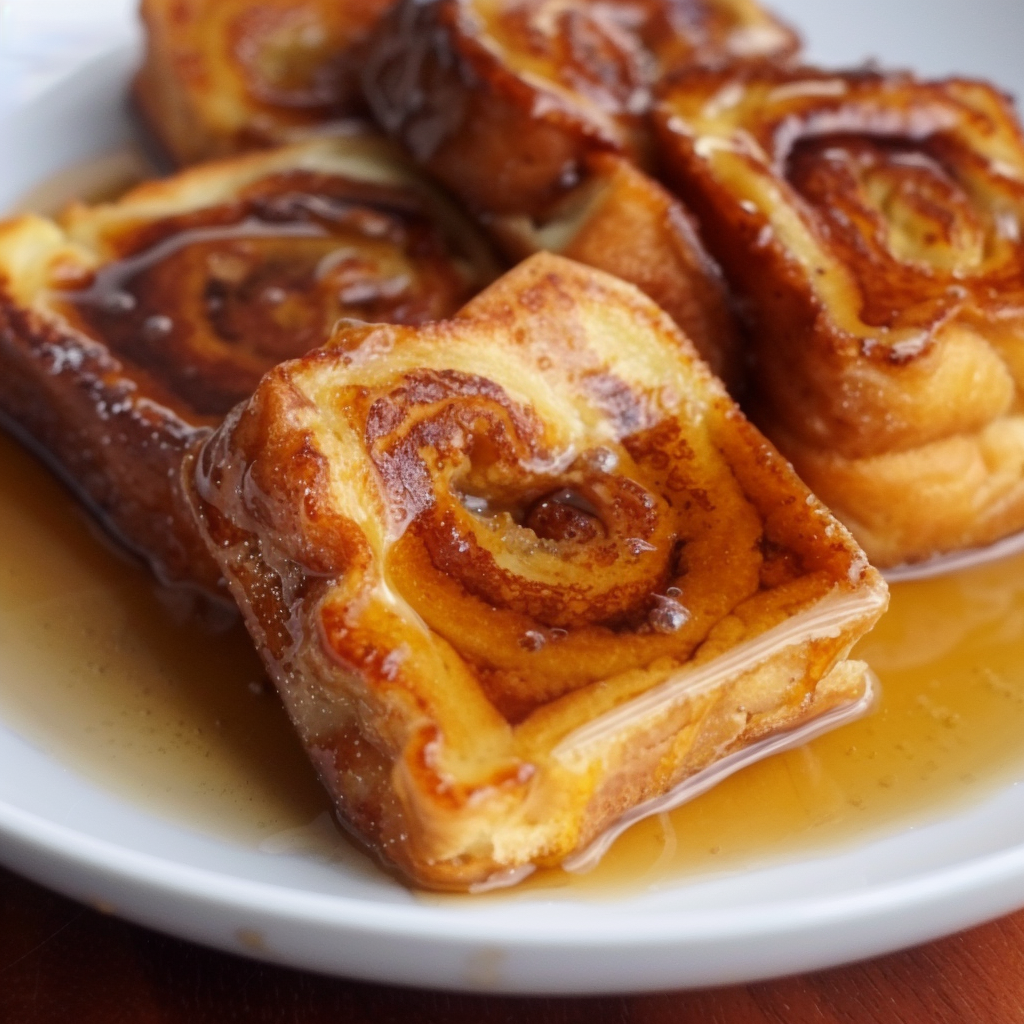
FAQs
Are French toast sticks healthy?
They can be! When made with whole grains, protein-rich ingredients, and minimal added sugar, they become a balanced, nutritious meal. Homemade versions are far healthier than fast-food or frozen alternatives.
How do I add more protein to French toast?
Use Greek yogurt, protein-fortified milk, or stir in a scoop of protein powder into the custard. You can also serve with high-protein sides like eggs or cottage cheese.
Can you freeze protein French toast sticks?
Yes. Lay cooked sticks flat on a tray and freeze, then store in a sealed freezer bag. They reheat well in a toaster oven or air fryer.
What’s the best bread for healthy French toast?
Whole grain, high-protein, or even low-carb bread are excellent choices. Just make sure the slices are thick and firm enough to dip and cook without falling apart.
Can I use almond or oat milk instead of dairy?
Absolutely. Unsweetened almond milk and oat milk both work well in the custard. Choose fortified versions with added protein if possible.
Protein French Toast Sticks How to Make Healthy Cinnamon French Toast at Home
Boost your breakfast routine with these protein French toast sticks—a healthy twist on a classic. Lightly sweetened, cinnamon-spiced, and packed with satisfying protein, they’re perfect for meal prep, brunch, or post-workout snacks. Made with thick-cut bread and a creamy custard featuring eggs, milk, and optional protein add-ins, these crispy sticks cook up fast and store beautifully. Serve with fruit, yogurt, or nut butter for a balanced, energizing start to your day.
- Author: Clara
Ingredients
- 4 slices thick-cut bread (like brioche or Texas toast)
- 2 large eggs
- 1/3 cup milk
- 1 teaspoon vanilla extract
- 1/2 teaspoon ground cinnamon
- Pinch of salt
- Butter or oil for cooking
- Maple syrup, for serving
Instructions
Cut each slice of bread into 3 or 4 equal sticks.
In a shallow bowl, whisk together eggs, milk, vanilla extract, cinnamon, and salt.
Dip each bread stick into the egg mixture, coating all sides but not soaking it too long.
Heat butter or oil in a skillet over medium heat.
Place the dipped bread sticks in the skillet and cook until all sides are golden brown, turning as needed.
Remove from skillet and serve warm with maple syrup.
Notes
-
Use thick, stale bread to prevent sogginess.
-
For more protein, add Greek yogurt or protein powder to the custard.
-
Freeze in a single layer, then store in a bag for grab-and-go mornings.
-
Best reheated in an air fryer or toaster oven for crispiness.
-
Serve with fresh fruit or healthy dips to keep things balanced.
